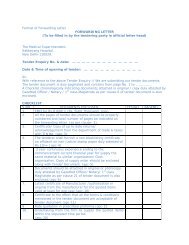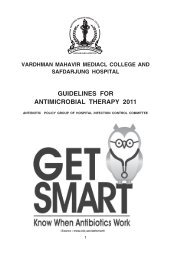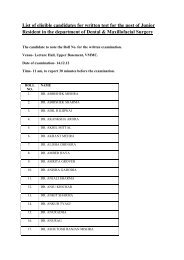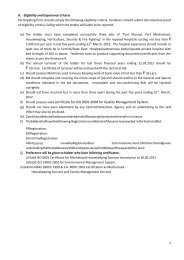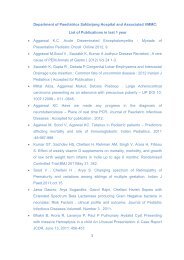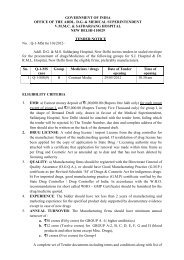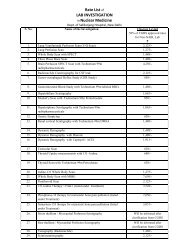Guidelines for INFECTION CONTROL POLICY - Safdarjung Hospital
Guidelines for INFECTION CONTROL POLICY - Safdarjung Hospital
Guidelines for INFECTION CONTROL POLICY - Safdarjung Hospital
You also want an ePaper? Increase the reach of your titles
YUMPU automatically turns print PDFs into web optimized ePapers that Google loves.
(ii)4. Pneumonia(a) Community Acquired Pneumonia (CAP)(b) Ventilator Associated Pneumonia (VAP)5. GIT Infections6. Conjunctivitis7. Otitis Media8. Tonsilltitis / Pharyngitis9. Skin and Soft Tissue Infection (SSTI)10. Genitali Infections11. OsteomyelitisNeonates (special conditions)1. Sepsis2. Meningitis(iii) Infants & Small Children (special conditions)1. Meningitis2. Sepsis3. Pneumonia(b) Classification of Antimicrobials into first line, second line and reserve group of drugs(c) Chemoprophylaxis(i) Pre-operative antimicrobials(ii) Other invasive procedures(iii) Special high risk groups e.g. Prophylaxis <strong>for</strong> rheumatic fever, splenectomypatients, immuno-compromised patients(d) Special clinical syndromes (e.g. STIs as per government guidelines)4. Prescription auditing (not being done at present; will be initiated in collaboration with thedepartment of Pharmacology) as per(i) age groups(ii) patient location – outdoor (OPD), indoor (wards & critical care areas)5. Quarterly and annual review of surveillance data generated from antibiograms (done) &prescription auditing (planned).6. Education and training <strong>for</strong> all infection control activities being coordinated by the departmentof Microbiology, in collaboration with the <strong>Hospital</strong> Infection Control Committee.16



